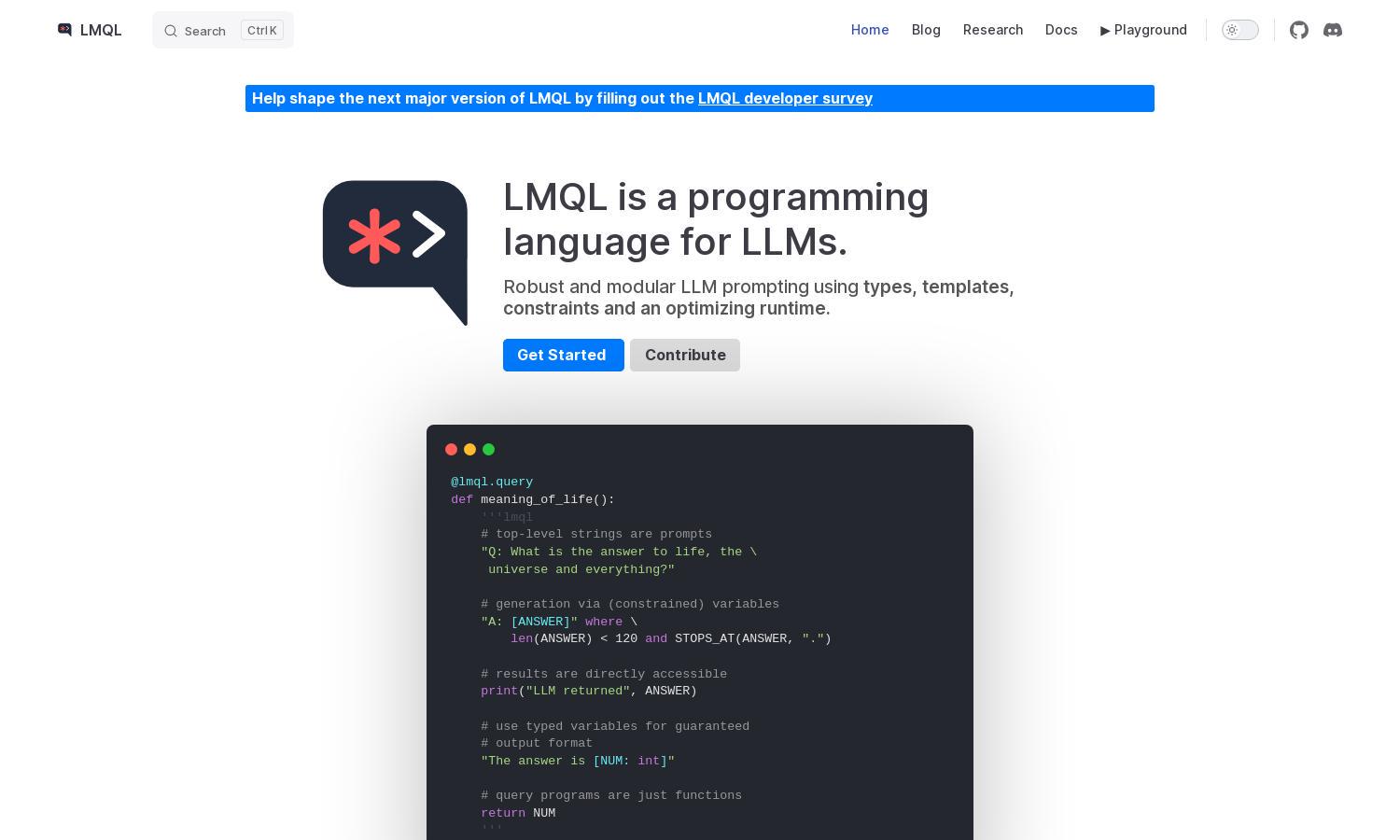LMQL

About LMQL
LMQL is a revolutionary programming language tailored for seamless interaction with language models. It empowers developers to create complex prompts with ease through features like nested queries and typed variables. Perfect for AI enthusiasts, LMQL enhances programming efficiency and provides structured outputs tailored to user needs.
LMQL offers flexible subscription options, catering to various developer needs. Users can choose a free access tier for basic features or upgrade to premium plans for enhanced functionalities and priority support. Discover exceptional value with each subscription tier, designed to maximize user productivity and AI capabilities.
LMQL boasts a user-friendly interface that simplifies prompt construction through intuitive navigation. Its clean layout, accompanied by dynamic features such as typed variables and nested queries, ensures a seamless user experience. LMQL prioritizes user engagement, making it easy to explore advanced functionalities and maximize productivity.
How LMQL works
To interact with LMQL, users simply onboard by creating an account and exploring its features. The platform allows for intuitive prompt design using Python-like syntax, enabling nested queries and variable-driven outputs. As users navigate through the interface, they can easily implement robust and modular LLM interactions, generating high-quality responses effortlessly.
Key Features for LMQL
Modular LLM Prompting
LMQL’s modular LLM prompting allows users to create sophisticated prompts with ease. This dynamic feature enables developers to reuse components and integrate multiple layers of instructions, streamlining the workflow while maximizing the quality of responses produced by language models.
Typed Variables for Output Format
Typed variables in LMQL ensure consistency and accuracy in outputs. By specifying data types directly in queries, users experience fully controlled generation processes, enhancing the potential for structured responses from language models tailored to specific user needs and preferences.
Nested Queries Support
Nested queries in LMQL bring a new level of complexity to prompt construction. This feature allows users to structure their queries into manageable components, facilitating clearer instructions and enhanced efficiency when working with language models across various applications and use cases.
You may also like:








